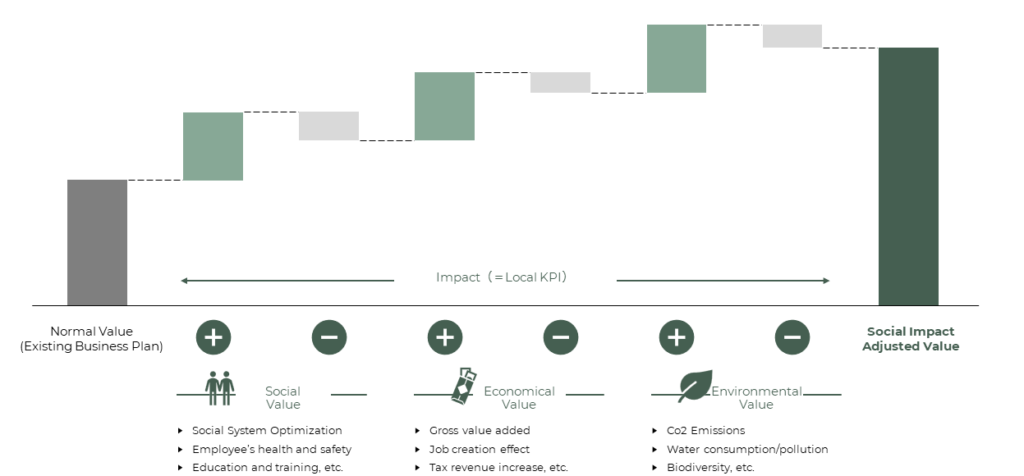Key Aspects of Impact Assessment and Quantification
In the field of impact assessment, various methodologies exist, taking micro and macro perspectives, and utilizing methods like backcasting and forecasting to recognize impacts. These methodologies find application in diverse areas such as sustainable finance, ESG evaluations, and stakeholder reporting. Among these, what IMPACTLAKE presents in these tips is designed with a focus on an outcome-based approach, aiming to facilitate communication among companies and investors in a relatively common and universal manner. Considering practical scenarios, this type of assessment is well-suited for endeavors like public equity investments, private equity investments, bond investments, and other strategic decision-making processes, where there is a strong emphasis on outlining the broader direction and impact.
However, beyond the correctness and coherence of such methodologies, the most crucial aspect lies in impact generators maximizing the impacts that lead to impact creation through appropriate management. Additionally, it is vital for these impact generators to share the importance of these impacts with their stakeholders, including employees and other involved parties, in a suitable manner. Furthermore, they should drive the creation of impact in alignment with a common understanding and purpose with these stakeholders, integrating it into their business strategies. This approach ultimately leads to the realization of sustainable performance and growth in corporate value.
Simultaneously, as the number of such impact generators increases, the impact generated at a societal level inevitably reaches its maximum potential.
Evaluation Steps
The foundation of impact management is a three-step impact evaluation process.

1.Organizing Issues Targeted by the Chosen Theme (or Themes)
Define the impact each theme targets
- Base the discussion on your company’s definitions or preset impacts
- Simultaneously, clarify the definitions and boundaries for each targeted impact
Structure and Breakdown of the Targeted Impacts
- Organize how each defined impact can be broken down
- Breakdown for Each Approach to Issue Resolution
2.Organizing Impact Generation Pathways for Each Theme and Designing Evaluation Methods and Criteria
Define and Confirm the Scope of Evaluation
- Based on the issue organization in the previous step, outline how business and technology within each theme can contribute.
Construct a Framework for Evaluation and Quantification
- Define evaluation items and establish the framework for evaluation (impact pathway)
- Define the necessary KPIs and parameters for each item
- Adjust and confirm the usability of the defined KPIs and parameters, and consider their weight
3.Selection of Evaluation Targets and Design of Evaluation Methods and Criteria
Establish a broad KPI plan for each theme
- Engage in discussions and hearings with your company concerning the aspects you can control
- Conduct additional research and analysis for aspects beyond your control, such as macro trends.
Impact Measurement and Quantification
- Apply numbers obtained or estimated from various secondary information and KPI plans to the defined impact pathways
- (Optional) Economic effect estimation based on certain assumptions (monetary conversion)
Related Tips
For detailed tips at each step, please refer to the following.
- Step 0: Pre-Consideration for Impact Utilization
- Step1:Setting Impact Objectives
- Step2:Building an Impact Model
- Step3:Review of the Impact Model
- Step4:Setting Impact KPIs
- Step5:Impact Measurement and Quantification
- Step6:Economic Valuation of Impact
- Step7: Impact Accounting
- Related Terms and Definitions
